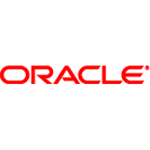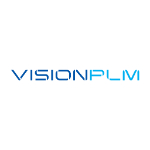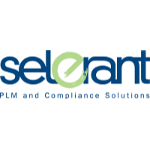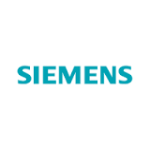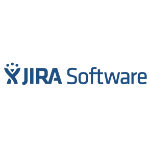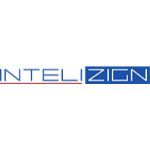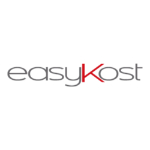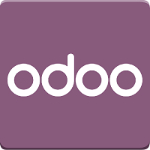TechnologyCounter provides genuine, unbiased real user reviews to help buyers make informed decisions. We may earn a referral fee when you purchase through our links, at no extra cost to you.
List of 15 Best PLM Software
Showing 1 - 15 of 45 productsOmnify is a software designed to streamline and simplify your business operations. With its user-friendly interface features, Omnify helps you save time, increase efficiency, and grow your business. From scheduling appointments to managing payments,...Read Omnify Reviews
Oracle Agile PLM is a product lifecycle management software designed to help businesses streamline their processes and improve efficiency. With its robust features and user-friendly interface, Oracle Agile PLM is a reliable tool for managing product...Read Oracle Agile PLM Reviews
Aha, the ultimate software solution for all your business needs. With its intuitive interface and powerful features, Aha streamlines your processes and ensures maximum efficiency. Say goodbye to complicated systems and hello to seamless management wi...Read Aha Reviews
Arena PLM, a powerful product lifecycle management software designed to optimize and streamline every stage of your products journey. With its intuitive interface and robust features, Arena PLM enables businesses to effectively manage their product d...Read Arena PLM Reviews
Vision is an efficient PLM software designed for retail and sourcing businesses. It provides effective management of new product development and minimizes the need for manual tasks. With its user-friendly interface and constantly updated information...Read Vision PLM Reviews
Aras PLM is a product lifecycle management software that streamlines and optimizes business processes for increased efficiency and productivity. With its dynamic and user-friendly interface, Aras PLM revolutionizes the way organizations manage their...Read Aras PLM Reviews
Dozuki is a leading software platform that streamlines processes, reduces errors, and empowers teams to work efficiently. With intuitive tools and customizable features, Dozuki allows businesses to easily create and share valuable content, driving su...Read Dozuki Reviews
Infor PLM is a management software designed to streamline product development processes, boost efficiency, and drive innovation. With its user-friendly interface features, Infor PLM empowers businesses to accelerate time-to-market and gain a competit...Read Infor PLM Reviews
Trace One Devex PLM is a software that streamlines product development and drives collaboration and innovation. With its advanced features and user-friendly interface, Trace One Devex PLM is the go-to solution for businesses of all sizes looking to o...Read Trace One Devex PLM Reviews
Siemens PLM is a leading software provider that offers innovative solutions for product lifecycle management. With a strong focus on efficiency and collaboration, Siemens PLM helps businesses streamline their design and manufacturing processes, reduc...Read Siemens PLM Reviews
Jira is a project management tool that is trusted by thousands of teams worldwide. With its intuitive interface and customizable features, Jira helps teams of all sizes stay organized, collaborate efficiently, and deliver high-quality results. Whethe...Read Jira Reviews
INTELISEARCH is a solution for efficient and accurate data searching. Developed with advanced technology and user-friendly interface, INTELISEARCH is the go-to software for all your data searching needs. Designed to streamline your search process, IN...Read INTELISEARCH Reviews
EasyKost is a solution for all your cost management needs. Designed to simplify and streamline your financial processes, EasyKost is a software that offers unmatched accuracy and efficiency. Say goodbye to tedious spreadsheets and hello to a smarter,...Read EasyKost Reviews
Odoo is a robust and open source enterprise resource planning (ERP) and customer relationship management (CRM) software that offers a wide range of business applications. One of its main features is the ability to track leads efficiently. Its user-f...Read Odoo Reviews
Propel is a software that streamlines and simplifies all your project management needs. With its user-friendly interface features, Propel makes team collaboration and task management a breeze. Say goodbye to traditional methods and welcome a new era...Read propel Reviews
- What Is PLM Software?
- Top Reasons Why Businesses Need PLM Software?
- What Are the Top Key Features of PLM Software?
- What Are the Top Benefits of PLM Software?
- What Are the Steps to Choose the Right PLM Software?
- What Are the Types of PLM Software for Different Industries?
- What Are the Technology Trends for Best PLM Software?
- What Are the Deployment Options for PLM Software?
What Is PLM Software?
Product Lifecycle Management (PLM) is a software solution that facilitates the comprehensive management of the whole product development process within firms. This encompasses several stages, including the original conceptualization of a new product, the subsequent design and production phases, as well as the provision of services for the product following its release.
The product lifecycle management system consolidates data, operations, and visual elements into a unified interface that encompasses various functionalities such as computer-aided design (CAD), computer-aided manufacturing (CAM), product configurator, product data management (PDM), supply chain management (SCM), collaborative product commerce, service parts management (SPM), and product re-engineering tools.
This suite of tools and practices facilitates enhanced collaboration between product managers and stakeholders, enabling them to make more informed decisions at various stages of the development process. PLM software facilitates the comprehensive management of various activities and documentation associated with a product within firms.
This software optimizes many processes such as product design development, bill of materials generation, review procedures, and other related duties. Furthermore, this software has extensive reporting capabilities, enabling users to make informed decisions regarding design or manufacturing modifications.
Moreover, it facilitates the monitoring and analysis of trends in a systematic manner. Consequently, these factors contribute to the enhancement of products, processes, and the reduction of production expenses.
In summary, PLM product lifecycle management software is a crucial instrument for enterprises engaged in the development and production of tangible goods.
Top Reasons Why Businesses Need PLM Software?
1. Effective tracking and management of product data: PLM software facilitates the systematic storage, centralization, control, and management of product and process data from diverse origins, ensuring an orderly arrangement.
2. Improved visibility and traceability of the entire product life cycle: PLM Product Lifecycle Management software offer a holistic perspective of the complete product life cycle, facilitating the systematic tracking of data, reports, decisions, and activities undertaken during the course of the product's existence.
3. Enhanced collaboration and communication: The utilization of top PLM systems facilitates the dissemination of information among team members, partners, and other stakeholders, hence fostering cross-functional collaboration and effective communication.
4. Automation and standardization of product development processes: PLM Product lifecycle management software solutions facilitate the optimization of product development procedures through the automation and standardization of workflows.
5. Optimized business operations: The product lifecycle management system facilitates the automation of manual procedures within firms, thereby minimizing human intervention and enhancing the optimization of internal resource use.
6. Quick access to accurate data: The utilization of the best product lifecycle management software enables firms to efficiently retrieve, evaluate, and modify data as necessary, resulting in expedited and precise decision-making processes.
7. Improved product quality and compliance: PLM Product lifecycle management software plays a crucial role in assisting organizations in achieving adherence to both internal and external standards, as well as enhancing the overall quality of their products.
8. Flexible product updates: PLM software facilitates the expeditious and effective management of product upgrades within firms, resulting in a reduction of lead time and the assurance of punctual delivery.
9. Reduced product development cost: Through the implementation of automation in product development processes, organizations have the potential to decrease design expenses and eradicate instances of human errors.
10. Increased revenue: The utilization of top product lifecycle management software has the potential to enhance operational efficiency for firms, enabling them to effectively adapt to evolving market demands. This, in turn, facilitates a reduction in time to market and an augmentation in revenue generation.
11. Reduced data redundancy: The utilization of top PLM software mitigates data redundancy by obviating the necessity for employing various solutions to oversee product data management.
12. Improved product portfolio management: The product lifecycle management system facilitates efficient administration of product portfolios by offering extensive visibility into all products and enhancements.
13. Simplified integration with external systems and applications: PLM software facilitates seamless interaction with pre-existing IT systems, hence granting enterprises the ability to get real-time data.
14. Improved asset and resource management: Top product lifecycle management software aids organizations in enhancing the efficiency of asset and resource use, hence facilitating improved resource allocation.
15. Increased customer satisfaction: The implementation of the best PLM systems enables organizations to mitigate product design risks and deliver products to clients in a timely manner, hence enhancing customer satisfaction through the provision of high-quality products.
What Are the Top Key Features of PLM Software?
1. Change Management: PLM software facilitates the efficient management of product and process modifications. The utilization of this technology facilitates the automation of several tasks related to change management, encompassing the monitoring, evaluation, and initiation of change requests.
2. Collaboration: PLM Product lifecycle management software facilitates seamless cooperation among several departments, including design, production, and other relevant stakeholders. The platform offers a secure environment for the collaborative exchange of design data and documentation.
3. Configuration Management: Top product lifecycle management software offers robust functionalities for effectively managing many iterations of designs or products, as well as optimizing the workflow involved in developing and overseeing configuration items.
4. Document Management: Product lifecycle management system provides comprehensive document and content management functionalities to effectively handle product versions, product information, engineering drawings, and associated documentation.
5. Product Lifecycle Management: PLM software facilitates the comprehensive management of an organization's products over their entire lifecycle, encompassing the stages from initial conception to eventual retirement. The software offers robust capabilities for effectively managing product information, facilitating workflow management, and monitoring progress.
6. Quality Management: The utilization of the best product lifecycle management software facilitates the assurance and enhancement of product quality through the monitoring and regulation of manufacturing quality. Additionally, it can aid in the prompt identification and resolution of product-related concerns.
7. Supply Chain Management: The utilization of top product lifecycle management software can enhance supply chain management through the efficient monitoring of inventory and facilitation of diverse transactions occurring between suppliers and customers.
8. Reporting and Analytics: Top PLM software provides robust reporting and analytics capabilities, which can facilitate informed decision-making pertaining to both products and processes.
9. CAD Integration: The Product lifecycle management system facilitates the smooth integration of various CAD files, enabling design teams to effectively cooperate on design projects.
10. Security: The utilization of the best product lifecycle management software provides a secure means of storing and retrieving design data, hence ensuring the protection of sensitive information.
What Are the Top Benefits of PLM Software?
The top benefits of PLM software include:
1. Streamlining product development: PLM software provides an optimized platform for effectively overseeing the entirety of product development procedures, spanning from initial conceptualization to final product launch. This strategy facilitates the reduction of time-to-market and enhances the overall quality of the product.
2. Improved tracking of product design decisions: The utilization of the best PLM software facilitates the establishment of a centralized repository, which serves the purpose of monitoring and documenting design decisions. This functionality empowers users to adhere to design standards and implement best practices throughout the design process.
3. Improved version control: The utilization of a product lifecycle management system facilitates the efficient management of many iterations of products and designs, thereby ensuring that pertinent individuals are granted appropriate access to the requisite information.
4. Increased collaboration: PLM software enables improved collaboration among heterogeneous teams, departments, and stakeholders, hence optimizing the exchange of information.
5. Reduced labor costs: The implementation of top PLM software facilitates the automation of many processes, hence diminishing the need for manual labor and resulting in significant cost reductions.
6. Increased visibility: The utilization of a product lifecycle management system enables stakeholders to get a comprehensive understanding of the entire product development process, facilitating the identification of patterns and the anticipation of potential issues.
7. Easier compliance with standards and regulations: The utilization of top PLM systems facilitates the assurance of product compliance management with regulatory, industry, and organizational requirements through the provision of convenient accessibility to pertinent documentation.
What Are the Steps to Choose the Right PLM Software?
1. Identify your company's product development process: Prior to the selection of a Product Lifecycle Management (PLM) system, it is imperative to ascertain the company's product development process and the nature of the products being developed. This information will aid in the assessment of the necessary features and capabilities required for a PLM software.
2. Identify existing issues and future needs: This inquiry seeks to identify current challenges and areas of dissatisfaction, as well as prospective future requirements, that could be addressed through the implementation of the best PLM software.
3. Assess software capabilities: Conduct an assessment of the functionalities offered by various PLM software in order to ascertain the most suitable solution that aligns with your organization's present needs and financial constraints.
4. Consider user experience: We seek the best PLM systems that possesses an intuitive interface that facilitates ease of learning and utilization, as it will be employed by various teams within the firm.
5. Research vendors: Conduct a comprehensive investigation of the various recommended vendors and their respective reputations to ascertain the optimal vendor that provides the most suitable solution and exemplary customer service for your firm.
6. Establish a budget: Develop a comprehensive financial plan for the procurement and integration of top PLM systems.
7. Develop ROI measurements: Formulate metrics and measurements to evaluate the efficacy of the best PLM software and its return on investment (ROI).
8. Utilize a pilot project: Prior to making a substantial investment in a comprehensive deployment, it is advisable to initiate a pilot initiative employing a scaled-down iteration of the program. This approach will facilitate the evaluation of the user experience and identify any potential concerns that require attention.
9. Test run it: It is advisable to conduct a trial implementation of the best PLM systems with selected users prior to its full-scale deployment throughout the entire firm.
10. Evaluate future needs: Regular evaluation of the program is vital to discern any prospective need for forthcoming updates or enhancements.
What Are the Types of PLM Software for Different Industries?
1. Enterprise resource planning (ERP) PLM software: This particular program facilitates the comprehensive management of a product's life cycle, encompassing many stages such as conceptualization, production, supply chain management, marketing, sales, and post-sales services.
2. Manufacturing execution system (MES) PLM software: This particular program is responsible for overseeing the implementation of a product inside the shop floor setting, encompassing tasks such as scheduling, monitoring, and overseeing the production process.
3. Computer-aided design (CAD) PLM software: This particular software is utilized for the purpose of automating the design process, hence facilitating the rapid and precise creation, storage, and modification of product designs.
4. CAD/CAM/CAE PLM software: This program integrates computer-aided design (CAD), computer-aided manufacturing (CAM), and computer-aided engineering (CAE) functionalities, facilitating efficient and precise product design and manufacturing processes.
5. Data management PLM software: This particular software aids in the management of product-related information, encompassing requirements, change orders, specifications, and other pertinent data during the whole lifespan of a product.
6. Collaborative PLM software: This program aids in fostering collaboration among teams, thereby enhancing the efficiency of the design process and ensuring the integrity of the final product.
7. Simulation and optimization PLM software: This software facilitates the simulation of several design options and the optimization of numerous design features in order to get an optimal product design.
What Are the Technology Trends for Best PLM Software?
The most recent trends in best PLM software are:
1. Cloud-based PLM systems: Cloud-based PLM product lifecycle management software offer a favorable equilibrium in terms of cost-effectiveness and scalability for enterprises. These platforms facilitate the utilization of contemporary software technology for product creation, eliminating the requirement for expensive server and software infrastructure within enterprises.
2. Internet of Things (IoT) integration: The integration of product development processes with the Internet of Things (IoT) has become imperative for manufacturers in light of its increasing prominence. The implementation of this interface enables manufacturers to get data and utilize it for the purpose of obtaining valuable insights that can be utilized to enhance their product development procedures.
3. Analytics and reporting capabilities: The best product lifecycle management software that includes analytics and reporting functionalities have the potential to offer immediate and up-to-date insights into the process of product creation, thereby enabling businesses to enhance the efficiency and efficacy of their product development endeavors.
4. Collaborative tools: The incorporation of collaborative tools inside the best PLM systems is essential to facilitate effective cooperation among teams engaged in product development. The utilization of top PLM systems such as wikis, chatbots, and discussion forums facilitates enhanced collaboration among geographically distributed teams engaged in product development endeavors.
What Are the Deployment Options for PLM Software?
PLM software is commonly implemented using three distinct deployment methods: on-premise, cloud-based, and hybrid models. The implementation of on-premise deployment necessitates the direct installation of the program into the servers owned by the customer.
The responsibility of setting up and maintaining many aspects, including patching, upgrading, and security, falls upon IT administrators. This option is widely regarded as the most secure due to its high degree of isolation. The utilization of cloud-based deployment enables consumers to conveniently access top PLM software using cloud computing infrastructure.
This implies that customers are not required to perform a software installation, but rather need to establish a connection with the servers of the service provider. This particular deployment alternative offers increased adaptability and scalability, albeit potentially resulting in diminished responsiveness and elevated expenses.
Hybrid models offer consumers a high degree of flexibility by granting them the ability to utilize both on-premise and cloud-based deployments, hence enabling the utilization of a combination of these two models.
Subsequently, the customer is had the opportunity to select the most appropriate deployment method that aligns with their specific requirements, so capitalizing on the benefits offered by both ways.
In general, every deployment strategy possesses distinct advantages and disadvantages, and the appropriate selection is contingent upon specific utilization scenarios.

